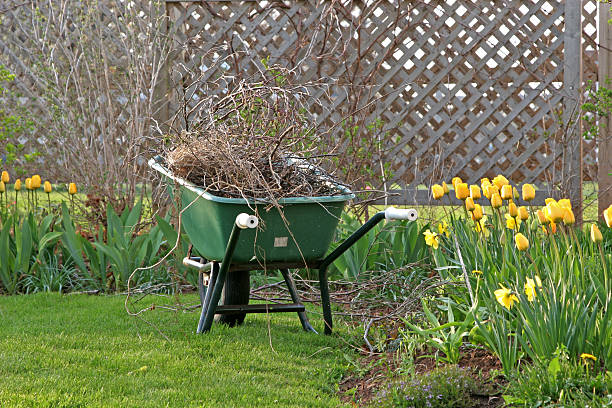Spring Clean Up in the Garden
go.ncsu.edu/readext?781912
en Español / em Português
El inglés es el idioma de control de esta página. En la medida en que haya algún conflicto entre la traducción al inglés y la traducción, el inglés prevalece.
Al hacer clic en el enlace de traducción se activa un servicio de traducción gratuito para convertir la página al español. Al igual que con cualquier traducción por Internet, la conversión no es sensible al contexto y puede que no traduzca el texto en su significado original. NC State Extension no garantiza la exactitud del texto traducido. Por favor, tenga en cuenta que algunas aplicaciones y/o servicios pueden no funcionar como se espera cuando se traducen.
Português
Inglês é o idioma de controle desta página. Na medida que haja algum conflito entre o texto original em Inglês e a tradução, o Inglês prevalece.
Ao clicar no link de tradução, um serviço gratuito de tradução será ativado para converter a página para o Português. Como em qualquer tradução pela internet, a conversão não é sensivel ao contexto e pode não ocorrer a tradução para o significado orginal. O serviço de Extensão da Carolina do Norte (NC State Extension) não garante a exatidão do texto traduzido. Por favor, observe que algumas funções ou serviços podem não funcionar como esperado após a tradução.
English
English is the controlling language of this page. To the extent there is any conflict between the English text and the translation, English controls.
Clicking on the translation link activates a free translation service to convert the page to Spanish. As with any Internet translation, the conversion is not context-sensitive and may not translate the text to its original meaning. NC State Extension does not guarantee the accuracy of the translated text. Please note that some applications and/or services may not function as expected when translated.
Collapse ▲Over the past few years I have not done a fall clean-up in my garden. It’s not that I’m lazy, but that I have learned to leave flower heads as a food source for birds. I leave other spent plant material and warm season ornamental grasses for insects and birds to use for protection from predators or as a protected place to overwinter. Spent flower heads and grasses can also add ornamental interest, movement and sound to the winter garden.
 So I save my garden clean up until spring these days and this month is a good time to get into the garden and clean up for the new season. Cut back old flower heads and other spent herbaceous plants now. Warm season ornamental grasses should be cut back now before new growth begins. Don’t cut the grasses all the way down to the ground, but leave 4-6”. If your ornamental grasses may need to be divided, save that chore until early summer when they are actively growing.
So I save my garden clean up until spring these days and this month is a good time to get into the garden and clean up for the new season. Cut back old flower heads and other spent herbaceous plants now. Warm season ornamental grasses should be cut back now before new growth begins. Don’t cut the grasses all the way down to the ground, but leave 4-6”. If your ornamental grasses may need to be divided, save that chore until early summer when they are actively growing.
If you may have already made a pre-emergent application to control crabgrass in your lawn, you may need to consider how saturated our soils have been and consider making a second application. Crabgrass will continue to germinate throughout the summer, so if you had a lot of crabgrass last year, you may need to make a second application of crabgrass control about 6 weeks after the first application.
If you have plants that may have some winter dieback, you can prune back to healthy tissue at this time. Also remove any broken, damaged, crossing or rubbing stems. Hedges can receive their first shearing this month if needed.
Spring is also a good time to look forward to future plans for your garden. You can layout and prepare new ornamental planting beds in the spring for fall planting. Connect with a local tree company to get free wood chips or you can get on a list for free wood chips at getchipdrop.com. Make sure to read the delivery conditions & watch the video before you sign up. You can cover a newly planned garden area with 12” of wood mulch. This will kill the vegetation underneath, and will quickly begin to break down, helping to make a good bed for fall planting.




